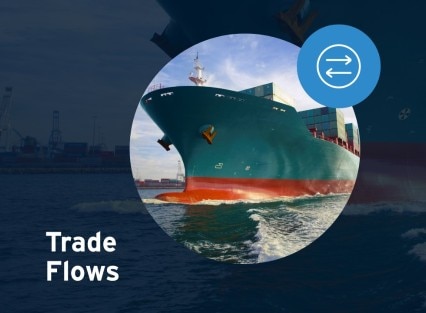Pressures Are Piling Up
Prior to the COVID-era supply chain shortages, capital was already starting to dry up in the auto sector. Production methods were changing dramatically in response to the transition to electric vehicles and the introduction of autonomous technology, which in turn required heavy capital investment. The industry also needed to accommodate growing consumer expectations. Buyers now want more advanced technology – such as better infotainment systems and more software options – as well as greater customizability. Gone are the days when nearly every customer drove off the lot with whatever was in stock; many are now willing to wait for a customized vehicle, disrupting OEMs’ traditional models.
With capital tied up in investments to address changing customer tastes, many OEMs began extending payment terms in search of liquidity. However, most Tier 1 and Tier 2 suppliers lack the purchasing power to pass this extension further down the chain, so they had to weather the change and take the margin hit. When COVID-19 resulted in supply chain shortages, the situation became tougher still. For instance, a Tier 2 manufacturer that relies on five separate components to put together its product may now have difficulty obtaining supplies for two of those components. The three that can be sourced must be carried in inventory in preparation for the arrival of the two on order, bloating working capital requirements. Labor shortages, higher natural resources costs, and increased logistical costs have also been added to the mix.
Taken together, these liquidity pressures are forcing the supply chain – and especially Tier 1 and 2 suppliers – to look for a fix. The good news is that solutions are available, and there has never been a better time to use them.
A Win-Win Option
The tried-and-true method of gaining immediate working capital benefits is an extension of payment terms. Some OEMs have pulled this lever, but Tier 1 and 2 suppliers would potentially inflict irreparable damage on their own counterparties if they tried it themselves, because each successive link down the chain is likely less able to weather an extension. A supply chain finance (SCF) program alleviates this problem by decoupling the buyer’s payment date from the seller’s receiving date, allowing either one to be changed without impacting the other.
The win for buyers
Using an SCF program, a Tier 2 seat manufacturer could extend terms for its leather or cotton suppliers from 60 days to 90 or even 120 days, for example. This provides the seat manufacturer with an instant boost of 30 to 60 days extra liquidity, but without its suppliers being impacted.
The win for sellers
In our example, the component suppliers not only avoid the impact of the extension, they can opt to receive payment earlier, on day 15 or even day 10. This immediately helps them gain 45 to 50 days of extra liquidity. Of course, the component suppliers will have to accept a discount on their invoices in exchange for the early payment, but that’s where the second benefit comes in. The discount, which is effectively the cost of finance, is based on the buyer’s credit rating, which is usually superior to the suppliers down the chain. Consequently, the cost of finance is often considerably lower than would be otherwise achievable for the supplier, assuming finance is available at all. This third benefit, readily available low-cost financing, is especially important in countries such as Mexico or China where many auto suppliers are based, and where financing at an affordable rate is difficult to find.
Working With the Right Bank
While SCF programs have much to offer the automotive supplier sector, it is important to recognize that they vary widely.
Given the international nature of the auto supply chain, the extent of banks’ global reach is a key differentiator when selecting a bank for an SCF program. Many auto suppliers now have extensive supply chains in Mexico, China and Eastern Europe – locations where only a handful of global banks have supplier onboarding capabilities. Given the lack of affordable financing in those countries as described above, a program that extends to these countries is particularly crucial.
The reputation and financial strength of the bank is also important in gaining supplier buy-in: suppliers are likely to be reassured that a program will deliver the benefits anticipated if a buyer works with a well-known global bank, for example.
Implementing an SCF program is relatively straightforward and can take as little as four weeks. While any discussion about term extensions is led by the buying company, the availability of early payment makes this conversation considerably easier. Furthermore, once the supplier has agreed to take part, the bank can onboard them, manage all program communications, provide training and guidance to the buyer’s procurement team, and even help manage internal discussions. Banks typically offer a portal giving visibility into the program as well as providing functionality such as reporting.
Citi Commercial Bank data shows the working capital benefits available to auto component companies from implementing an SCF program can amount to tens of millions of dollars a year, while the solution can extend firms’ cash conversion cycle by more than 20 days. Moreover, once companies appreciate the benefits of programs – both in terms of improving their working capital and strengthening supplier relations – many go on to expand them to new geographies or supplier segments, generating additional gains. As the auto industry enters a period of historic change, SCF will have a crucial role to play in enhancing working capital throughout the supply chain and helping companies prepare for the future.



